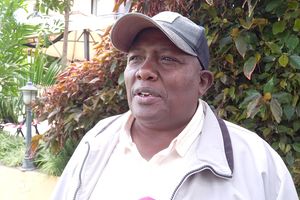The hurdles female journalists face

Microphone. Cases of sexual harassment against women journalists are on the rise.
What you need to know:
- Rosalia Omungo, the CEO of Kenya Editors Guild (KEG), said the organisation has formed a taskforce to look into sexual harassment allegations in the industry.
- They noted that impunity in the justice system has been impairing attempts to protect female journalists outside the newsroom.
Winnie Kamau was excited when she landed a job in one of the leading media companies in Kenya.
She started off with zeal and determination. In a newsroom of 35 men, she was the only camerawoman. However, as she would soon realise, life in the newsroom was not a bed of roses.
Her male colleagues started hitting on her, but she kept on ignoring and rejecting their advances. However, her reluctance only motivated them.
“Actually, one of the male colleagues bet on me. He said yule ataniangusha ni dume (whoever would win me over was a real man)’. Most of the men, including drivers, would hit on me. But I stayed firm, and for the 10 years that I worked in the media, I never gave in,” Winnie said.
She recounted her ordeal during the release of the findings of regional research that examined the gendered dimensions of journalists’ safety based on Unesco Journalists Safety Indicators, in Nairobi.
Winnie’s experience is just a tip of the iceberg of what female journalists undergo in their workplaces and while discharging their duties.
Charity Komujjurizi, the monitoring and evaluation coordinator at the Africa Freedom of Information Centre (AFIC), said the survey revealed that more female than male journalists in the East African region are resorting to self-censorship, while others are abandoning the profession because of sexual harassment, security threats and lack of career progression.
AFIC is a Pan-African, membership-based civil society network and resource centre promoting the right of access to information, transparency and accountability across Africa.
Harassment
The survey showed female journalists significantly reported more harassment by male editors, fellow reporters, news sources, and politicians and their supporters. Cyberbullying and attacks in social media also top the concerns of female journalists in the region.
“From the survey findings, it is clear that it is the female journalists who mainly face sexual harassment both in the newsroom and in the social media,” said Ms Komujjurizi.
The media intermediaries consulted in the study observed that newsrooms are still male-dominated, with men more likely to thrive, while women lagged behind because of safety issues, unequal pay, and hectic personal lives.
Women, the study found, are more vulnerable when reporting crime and politics, with editors preferring to assign such assignments to male reporters. Respondents acknowledged the existence of women’s safety policies in the newsroom but reported their redundancy, as many female journalists remained silent, especially when the perpetrator was influential.
They noted that impunity in the justice system has been impairing attempts to protect female journalists outside the newsroom.
Rosalia Omungo, the CEO of Kenya Editors Guild (KEG), said the organisation has formed a taskforce to look into sexual harassment allegations in the industry.
“We are working with human resources departments in media houses to tame sexual harassment. We are also going to invoke the integrity clause in the KEG constitution to safeguard the rights of journalists. I also encourage journalist who experience sexual harassment to report, get an OB number and speak out about it,” said Ms Omungo.
Gender policies
Christine Nguku, the assistant director in charge of training and curriculum development at the Media Council of Kenya (MCK), encouraged media houses to develop gender policies to help rein in sexual harassment. She, however, observed that the challenge would be implementing the policy they themselves have come up with.
“It is such a disappointment to see editors being accused of sexual harassment. We also have professional harassment where editors refuse to publish stories by some of the journalists without a justifiable reason. I urge journalists to use gender desks at the police stations to report sexual harassment in the workplace,” said Ms Nguku.
Another study by the World Association of News Publishers and the University of London found that Kenya’s female journalists reported most sexual harassment within newsrooms, with 45 per cent coming from coworkers, 23.3 per cent direct supervisors, 15.7 higher management, 12.7 from news sources, and others 2.6 per cent.
Of the 56 per cent derived from a sample of 83 study subjects in Kenya, 22 per cent reported the harassment incident, and only 40 per cent received some action from their employers. Another 30.6 per cent of the cases reported were dismissed, and 16.7 per cent said the perpetrators only got a warning. At least 5.6 per cent said perpetrators were suspended, and only 11.1 per cent felt supported when they reported.
In a 2018 baseline study on online violence, the Association of Media Women in Kenya found that female journalists in Kenya were victims of smear campaigns usually spread through social media platforms, unflattering and doctored photographs and hashtags.
Female television journalists, the study found, have been insulted for their dress code, with one being forced to leave some of the social media platforms.




